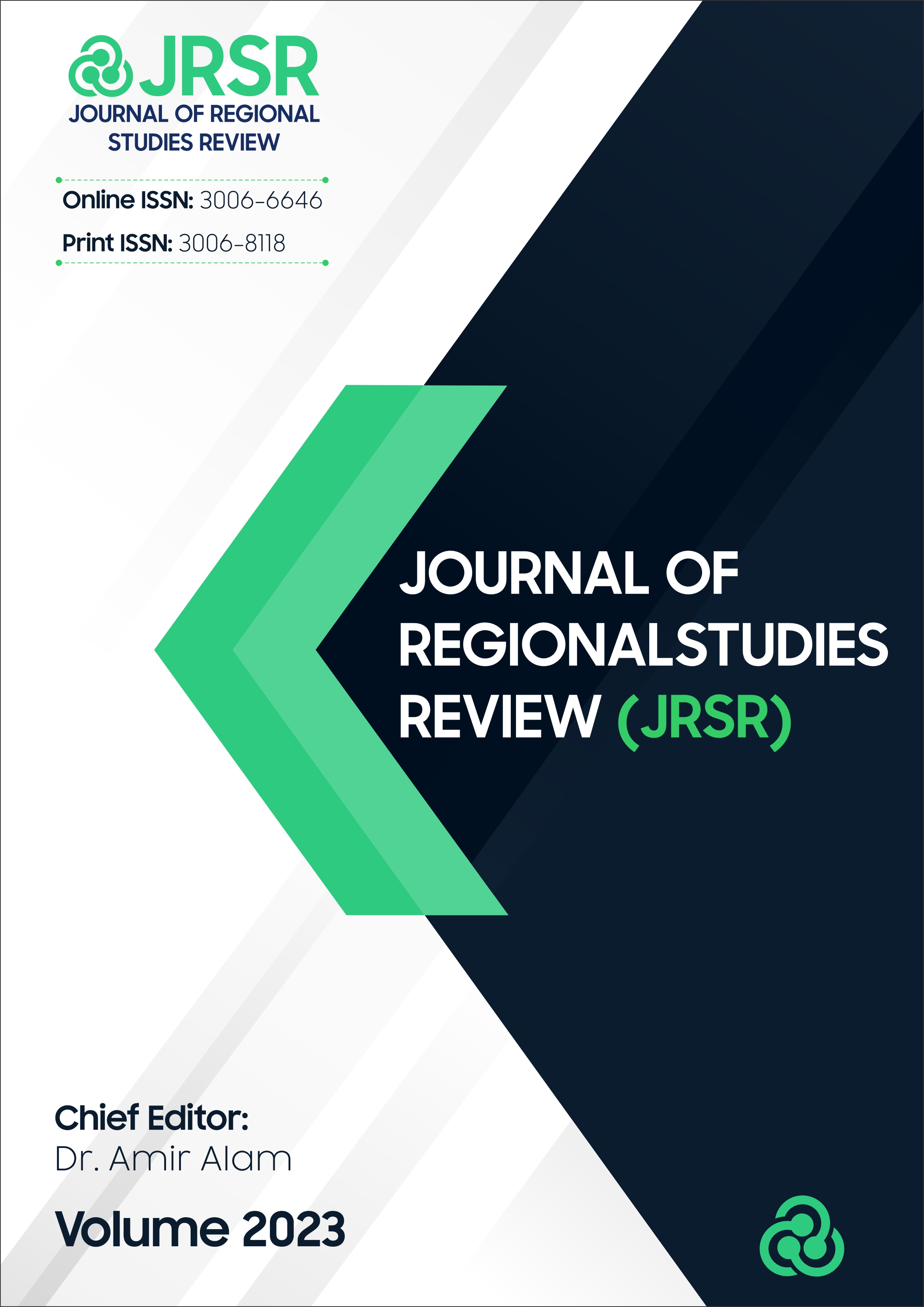An Examination of Chinese Interests in Pakistan from a Regional Perspective
DOI:
https://doi.org/10.62843/jrsr/2023.37905Keywords:
China, Pakistan, Regional Perspective, International Politics, EconomyAbstract
This study aims to examine the manner and level of Chinese interests in Pakistan. The study tries to comprehend the existing level of cordiality between China and Pakistan by analyzing their approach to actively seeking new markets in the region. While Pakistan has consistently prioritized maintaining a friendly relationship with China as a fundamental aspect of its foreign policy, the process of transforming this friendship into a formal cooperation has been difficult due to their shared interests. In the realm of international politics, the connection between nations is an intricate interplay of practical national interests, which are diverse and subject to change in response to shifting regional and global circumstances. Given their shared political, economic, and strategic objectives, both Pakistan and China are prioritizing the protection of their mutual interests. This paper will examine the widely held belief that China is unavoidable by avoiding the opposite viewpoint. The common risks and problems encountered by both nations are the primary factors that unite them in terms of security, political, economic, and strategic aspects.
References
Amir, M., Rizwan, M., & Bano, S. (2018). Chinese interests in Pakistan: A study in regional perspective. Global Management Sciences Review, III(I), 1-8. https://doi.org/10.31703/gmsr.2018(iii-i).01
Aoyama, R. (2016). "One Belt, One Road": China’s new global strategy. Journal of Contemporary East Asia Studies, 5(2), 3–22. https://doi.org/10.1080/24761028.2016.11869094
Çaksu, A. (2020). Islamophobia, Chinese Style: Total Internment of Uyghur Muslims by the People’s Republic of China. Islamophobia Studies Journal, 5(2), 175–198. https://www.jstor.org/stable/10.13169/islastudj.5.2.0175
Chen, X., & Cheung, Y. (2011). Renminbi going global. China & World Economy, 19(2), 1–18. https://doi.org/10.1111/j.1749-124x.2011.01232.x
Chohan, U. W. (2018). The political economy of OBOR and the global economic centre of gravity. In Brill | Nijhoff eBooks (pp. 59–82). https://doi.org/10.1163/9789004373792_004
Choudhury, A., & Moorthy, P. (2018). Strategic-Maritime Triangle in the Indian Ocean: An Emerging Indo-US Naval Entente? India Quarterly, 74(3), 305–325. https://www.jstor.org/stable/48505614
Farooq, K. O. (2019, July 4). Chabahar Port: A step toward connectivity for India and Afghanistan. The Diplomat – The Diplomat is a current affairs magazine for the Asia-Pacific, with news and analysis on politics, security, business, technology and life across the region. https://thediplomat.com/2019/07/chabahar-port-a-step-toward-connectivity-for-india-and-afghanistan/
Hafeez, Q. (2018, September 27). China's role in the 1965 indo-pak war. Modern Diplomacy. https://moderndiplomacy.eu/2018/09/27/chinas-role-in-1965-indo-pak-war/
Hali, S. M., Shukui, T., & Iqbal, S. (2014). One Belt and One Road: Impact on China-Pakistan Economic Corridor. Strategic Studies, 34/35, 147–164. https://www.jstor.org/stable/48527479
Hassan, K. (2020, January 1). CPEC: A win-win for China and Pakistan. De Gruyter. https://www.degruyter.com/document/doi/10.1515/humaff-2020-0020/html?lang=en
Hofman, B. (2015, December 4). China’s One Belt One Road initiative: What we know thus far. World Bank Blogs. https://blogs.worldbank.org/eastasiapacific/china-one-belt-one-road-initiative-what-we-know-thus-far
Javaid, U., & Javaid, R. (2016). STRENGTHENING THE GEO-STRATEGIC BOND OF PAKISTAN AND CHINA THROUGH GEO-ECONOMIC CONFIGURATION. Pakistan Economic and Social Review, 54(1), 123–142. https://www.jstor.org/stable/26616702
Khalid, M. (2021, November 30). Pakistan-China relations in a changing geopolitical environment – NUS Institute of South Asian Studies (ISAS). https://www.isas.nus.edu.sg/papers/pakistan-china-relations-in-a-changing-geopolitical-environment/
Khetran, M. S. (2014). The Potential and Prospects of Gwadar Port. Strategic Studies, 34/35, 70–89. https://www.jstor.org/stable/48527476
Madan, T. (2020, September 9). Emerging global issues: The China-India boundary crisis and its implications. Brookings. https://www.brookings.edu/articles/emerging-global-issues-the-china-india-boundary-crisis-and-its-implications/
Menon, A. (2021, October 14). 8 major ports in Pakistan. Marine Insight. https://www.marineinsight.com/know-more/major-ports-in-pakistan/
Ranade, J. (2022). CPEC and challenges for Pakistan. Xi Jinping: China's Third New Era, 318-331. https://doi.org/10.4324/9781003349549-51
Rizvi, H. A. (2014). The China-Pakistan Economic Corridor: Regional Cooperation and Socio-Economic Development. Strategic Studies, 34/35, 1–17. https://www.jstor.org/stable/48527472
Sakeena. (2021). CPEC opportunities and challenges for Pakistan. Qlantic Journal of Social Sciences & Humanities, 2(2), 1-16. https://doi.org/10.55737/qjssh.995757849
Tsang, M. C. (2000). Education and National Development in China since 1949: Oscillating Policies and Enduring Dilemmas. China Review, 579–618. http://www.jstor.org/stable/23453384
Yetiv, S. A., & Chunlong Lu. (2007). China, Global Energy, and the Middle East. Middle East Journal, 61(2), 199–218. http://www.jstor.org/stable/4330385



